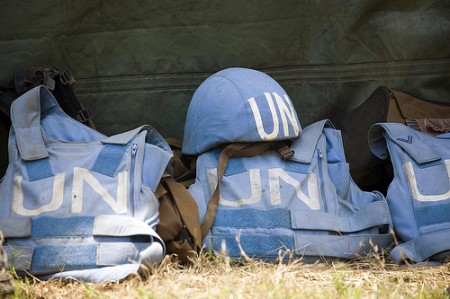
As anger in Haiti intensifies, with some residents blaming Nepali peacekeepers for having brought cholera to the island, a closer look at the composition of UN peacekeeping missions seems in order.
In October 2010 the UN had approximately 100,000 police officers, military experts and troops operating around the world in more than 17 UN peacekeeping missions. These operations cost the UN, in the 2005-2006 period, more than $5 billion, more than triple the UN’s core operating budget.
If we look at who the main contributors are, somewhat surprisingly, almost 30 percent of UN troops come from three countries that can be found in one of the most unstable parts of the world: Pakistan, India and Bangladesh. How is it possible that a country like Pakistan, that ranks 10th on the Failed States Index of 2010, is also the second most active country in terms of UN peacekeeping? The answer, of course, is money. Poorer countries earn valuable financial resources by contributing to UN missions. But shouldn’t these soldiers be at home, trying to stabilize their own countries and can they, if ‘thrown together” in a single mission operate together effectively despite deep-rooted animosities ‘at home’?
Advocates of UN peacekeeping missions, and the biggest financial contributors to the UN itself, namely EU countries and the US, are among the countries that contribute the least with troops. Except for Spain, France and Italy, no other European country contributes more than 1,000 troops. Even countries like Yemen and Zimbabwe contribute more troops to peacekeeping missions than the US. The question naturally arises: Why do western countries not put their money (and their manpower) where their mouth is by sending well trained, well equipped troops to trouble spots around the world, where they, by international consensus, are needed the most?
Even more surprising is that many African countries, such as Rwanda, Nigeria or Ethiopia, can be found among the top contributors. A country like Côte d’Ivoire, that hosts an UN peacekeeping mission itself, contributes with more than 100 police officers to the peacekeeping efforts in Haiti.
Questions about troop quality also arise. How well equipped and disciplined are troops that stem from unstable countries with- most likely- underfunded armies? Wouldn’t it be more effective to send highly trained and seasoned troops from more stable countries (western or non-western) to conflict regions?
Certain trends also define the size and scope of country contributions. They either focus all or most of their troops into one mission, like Brazil that has most of its soldiers in Haiti, or they divide their soldiers equally among all UN peacekeeping missions, like Jordan. I don’t know what the most efficient way of doing peacekeeping is, but I would advocate sending all the troops in a reduced amount of missions, to facilitate cohesion among troops on the ground. Is it really efficient, for example, to have 71 different countries sending troops to one mission, like the one in Sudan? Or is a situation like the one in Cyprus better where “only” 21 countries are present? What defines cohesion and workability in these missions?
I leave you with all these questions open, but I believe something is certain: In a more globalized, ‘fractured’ world, UN peacekeeping efforts are now needed more than ever, and discussions about their efficacy should also address their composition. We need to ensure that the best possible resources from all over the world are available to the UN and its vital peacekeeping missions.

